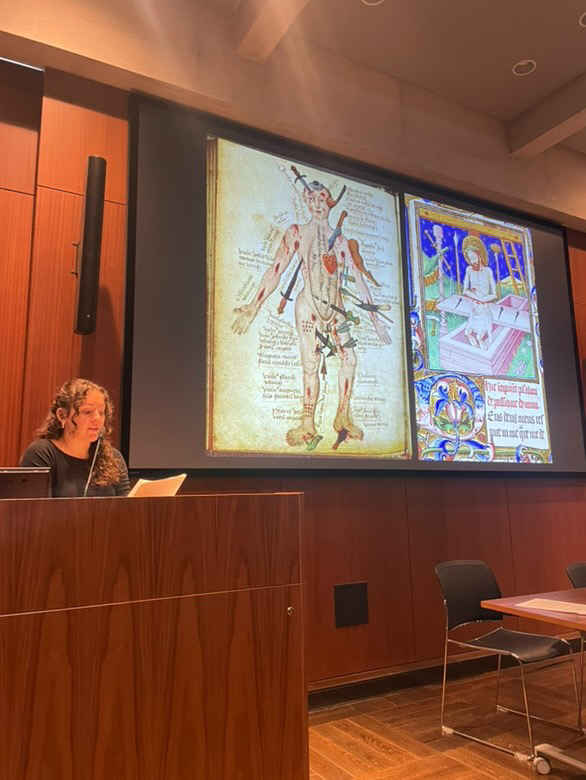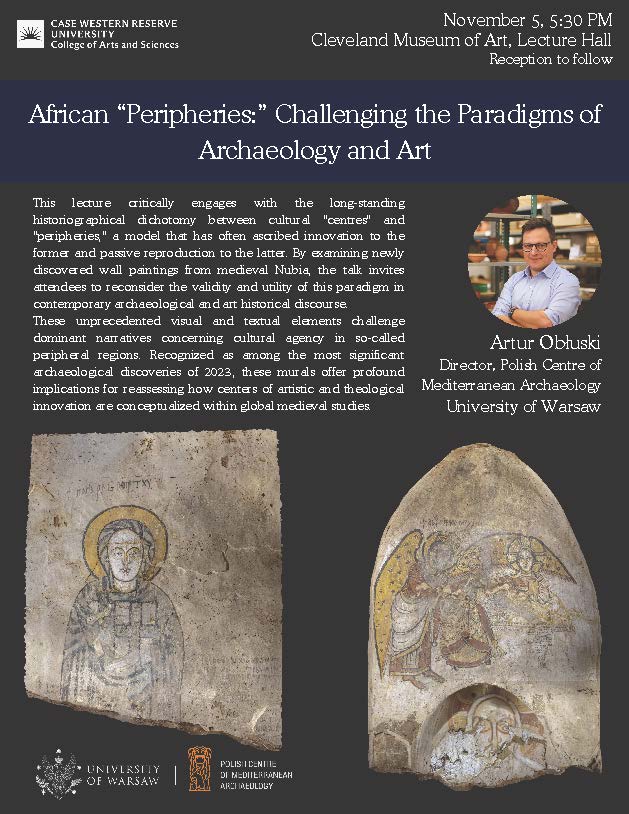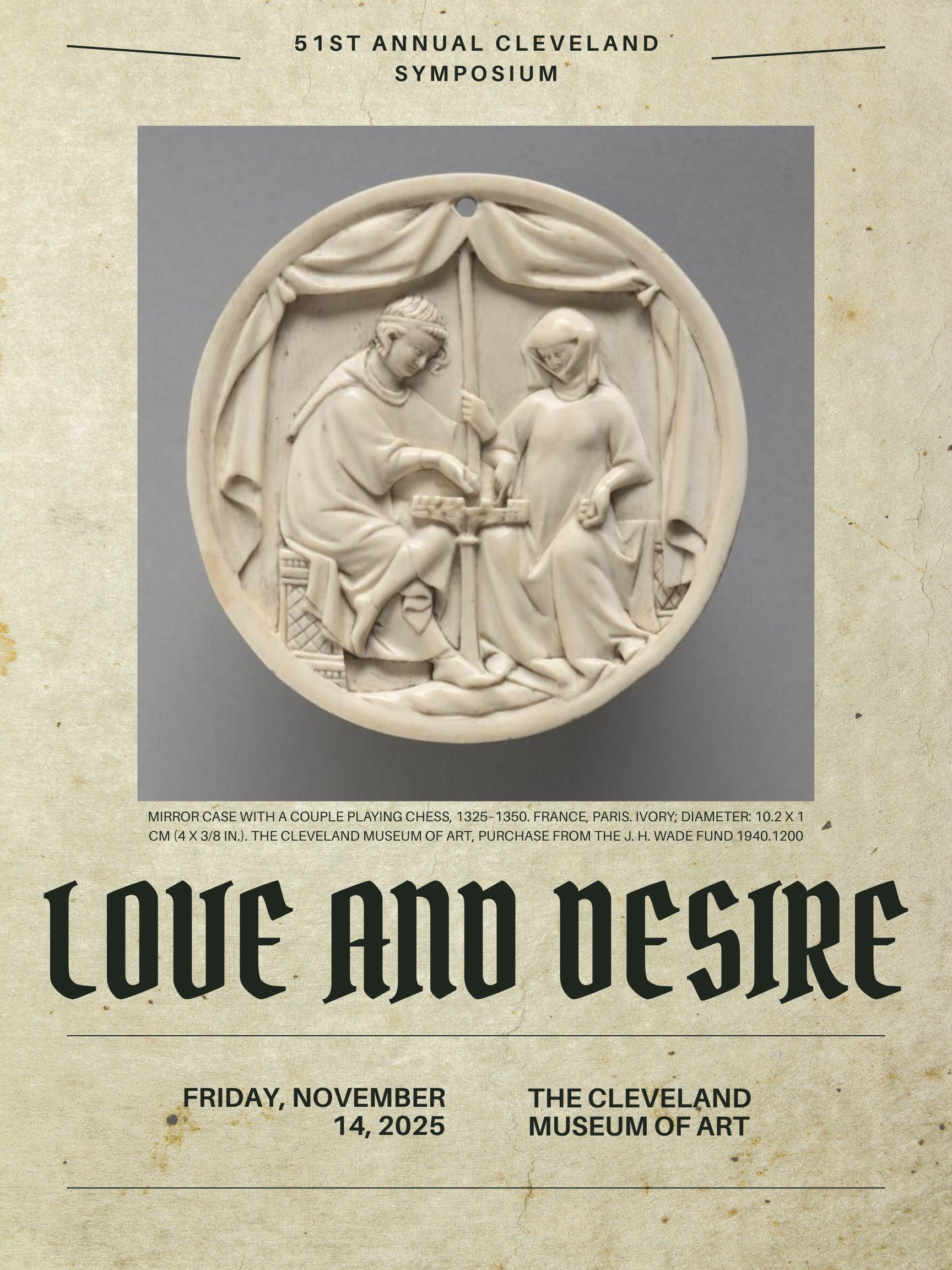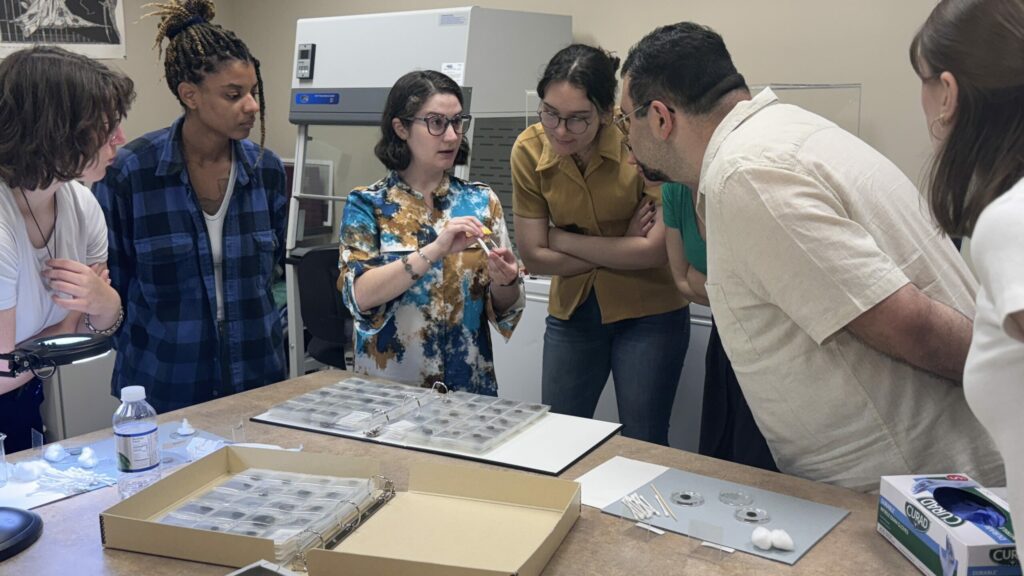Congratulations to Anna Farber, a first-year MA student in medieval art, who presented her paper “Issues of Blood: Profuse Menstruation in Medieval Art” at the SECAC’s annual conference, held this year in Cincinnati. The session, “Tidal Flux: The Representation of Menstrual Periods in Art,” featured both art historians and practicing artists who examined menstruation’s often-unexplored impact on the visual record. While at the conference, Anna had the opportunity to visit several Cincinnati arts institutions, including the Cincinnati Museum of Art, and meet colleagues from all over the world to discuss common issues facing our field. We look forward to Anna’s paper at the Cleveland Symposium this Friday!
Uncategorized
Congratulations to Claudia Haines, third-year PhD student in medieval art, who recently traveled to London to present her paper “Suffering and Salvation: The ‘Wound Man’ Iconography in Late Medieval Medical Manuscripts” at the international symposium “‘As stiffe twin compasses’: Allegory and Sciences, 1300–1700,” held at the Warburg Institute on October 24–25. The two-day event brought together scholars from across Europe and North America to explore how allegorical modes shaped—and were shaped by—the emerging disciplines of natural philosophy, astronomy, medicine, and early modern science. During her trip, Claudia had a chance to see several exhibitions of medieval medical manuscripts, the potential focus of her dissertation.
The Department of Art History and Art Congratulates , an exhibition of work by artists currently incarcerated in the Ohio correctional system. Megan worked closely with Julian Rogers (Associate Vice President, Local Government and Community Relations, CWRU), Kathy Barrie (Director of the Putnam Collection), Marilyn Burnett (Putnam Collection), and Eric Gardenhire at Grafton Correctional Institution; together...
Congratulations to Cecily Hughes, fourth-year PhD candidate in medieval art, who traversed Scandinavia over the past few months to present at two international conferences and conduct dissertation research. In Reykjavik, Iceland, Cecily attended the 31st Congress of Nordic Historians where she delivered her paper “A Place to Shine: Darkness and Light in a Medieval Swedish Sacrament Niche.” Crossing the Baltic Sea to Helsinki, Finland, Cecily discussed “The Measure of a Saint: Size, Movement, and Meaning in St. Olaf Pilgrim Badges,” at the 14th triennial NORDIK Conference of Art History in the Nordic Countries. On the Swedish island of Gotland, Cecily visited twenty-two medieval churches, documenting their vivid wall paintings, art objects, and architecture.
HENRY ADAMS
-ARTH/PHYS 150 An Introduction to the Universe and to the Meaning of Everything
MW 12:45pm-2pm
-ARTH 272 American Modernism in an International perspective (inactive n/a to schedule CAF submitted)
MW 4:50pm-6:05pm
ERIN BENAY
-ARTH 396 Majors Seminar
TTH 11:30am-12:45pm
-ARTH/HSTY 375/475 Doors Wide Shut: The Private Art Collection from Raphael to Rauschenberg (inactive n/a...
Please join us for an extraordinary opportunity to learn about virtually unknown medieval Christian art and architecture in modern Sudan. Dr. Obłuski will be talking about a range of issues, including the excavation of a small building with wall paintings that Archaeology Magazine named among the top ten discoveries in the world in 2023.
This lecture...
Please join us on November 19 for what promises to be a fantastic lecture to be delivered by Margaret Graves, Adrienne Minassian Associate Professor of Islamic Art and Architecture at Brown. Titled “Islamic Ceramics and Other Fictions of Capital,” the lecture explores the fictionalized objects of Islamic ceramics collecting that suture together multiple temporalities with skill and ingenuity, creating new objects of delight for elite collectors and asking us to think again about what we value most in the artifacts of the medieval past. The lecture will be of interest to academics, museum professionals, and collectors, so please spread the word!
The Cleveland Symposium is just around the corner! Click below to access our exciting lineup of speakers. We hope to see you there!
Congratulations to MA student Lachelle Oglesby on the publication of her essay, "Restoring the Egyptian History of the First Neferibre Obelisk," in Pasts Imperfect. Lachelle's essay is the result of research she conducted this summer as a participant in the American Academy in Rome's Classical Summer School. You can read the...
The groundbreaking work of Prof. Elina Gertsman, Distinguished University Professor and the Andrew W. Mellon Professor in the Humanities, and her colleague and co-author, Vincent Debiais, Research Professor at the École des Hautes Études en Sciences Sociales in Paris, was featured in The Daily. Read here about their collaboration and about the integral role their graduate students played in this international multidisciplinary project!
Congratulations to PhD candidate Arielle Suskin, who has been awarded a Flash Grant from the Baker-Nord Institute for the Humanities. The grant will support the upcoming exhibition that Arielle is curating related to the Kelvin Smith Library Special Collections Roman Coin Collection. Arielle is the Research Lead on the...
Reed O’Mara, PhD candidate in medieval art and Mellon Foundation Fellow, recently completed a year-long curatorial internship at the J. Paul Getty Museum in Los Angeles, CA. While there, Reed helped to produce and write an in-gallery video game, The Pilgrimage Road. The game takes players through the Camino de Santiago, a popular medieval pilgrimage to see the relics of St. James, and was part of the exhibition Going Places: Travel in the Middle Ages. You can read more about the game and Reed’s work here.










